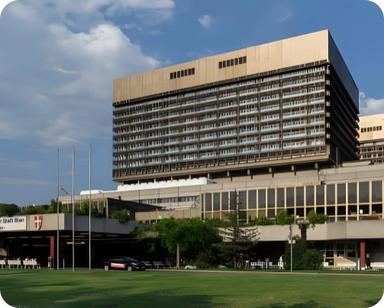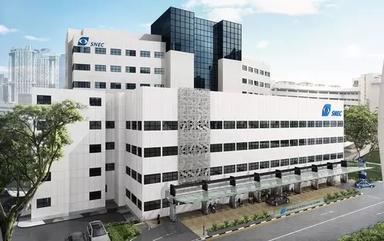
Transforming Lives with CABG
Coronary Artery Bypass Grafting (CABG) is a major surgical procedure that aims to improve blood flow to the heart muscle in patients with severe coronary artery disease (CAD). CAD occurs when the coronary arteries, which supply blood to the heart muscle, become blocked or narrowed due to plaque buildup, leading to a reduction in blood flow and an increased risk of heart attack.
Key Aspects of CABG:
- Purpose: CABG is performed to bypass the blocked sections of the coronary arteries. This is done by grafting vessels from other parts of the body—often the saphenous vein in the leg or the internal mammary artery in the chest—to the coronary arteries, allowing blood to flow around the obstructed or narrowed areas.
- Procedure: The surgery is generally performed under general anesthesia. The most common technique is the "on-pump" surgery, which involves using a heart-lung machine to maintain circulation while the heart is temporarily stopped. An "off-pump" approach may also be used where the surgery is performed on a beating heart without the aid of a machine.
- Recovery: Post-surgery, patients typically spend a few days in the hospital to monitor recovery and manage pain. The overall recovery period can last several weeks, during which patients are advised to participate in cardiac rehabilitation—a program that includes exercise, health education, and emotional support to aid recovery and improve cardiovascular health.
- Outcomes: CABG has been shown to relieve symptoms such as chest pain, improve overall heart function, and reduce the risk of future heart attacks. It is particularly beneficial for patients with multiple blocked arteries or more severe forms of coronary artery disease.
CABG is a life-saving procedure for many individuals, allowing them to resume normal activities with improved heart function and reduced symptoms.
5.0
92% Rated Value for Money
Why Choose us?
95%
Success Rate
3+
CABG Surgeons
2+
CABG
3+
Hospitals Around the world
2+
Lives touched
Overview
Coronary Artery Bypass Grafting (CABG) is a major surgical procedure that aims to improve blood flow to the heart muscle in patients with severe coronary artery disease (CAD). CAD occurs when the coronary arteries, which supply blood to the heart muscle, become blocked or narrowed due to plaque buildup, leading to a reduction in blood flow and an increased risk of heart attack.
Key Aspects of CABG:
- Purpose: CABG is performed to bypass the blocked sections of the coronary arteries. This is done by grafting vessels from other parts of the body—often the saphenous vein in the leg or the internal mammary artery in the chest—to the coronary arteries, allowing blood to flow around the obstructed or narrowed areas.
- Procedure: The surgery is generally performed under general anesthesia. The most common technique is the "on-pump" surgery, which involves using a heart-lung machine to maintain circulation while the heart is temporarily stopped. An "off-pump" approach may also be used where the surgery is performed on a beating heart without the aid of a machine.
- Recovery: Post-surgery, patients typically spend a few days in the hospital to monitor recovery and manage pain. The overall recovery period can last several weeks, during which patients are advised to participate in cardiac rehabilitation—a program that includes exercise, health education, and emotional support to aid recovery and improve cardiovascular health.
- Outcomes: CABG has been shown to relieve symptoms such as chest pain, improve overall heart function, and reduce the risk of future heart attacks. It is particularly beneficial for patients with multiple blocked arteries or more severe forms of coronary artery disease.
CABG is a life-saving procedure for many individuals, allowing them to resume normal activities with improved heart function and reduced symptoms.
FAQs
Packages starting from
Need help in choosing the right package for your medical trip?
Your Health data is protected with us




















